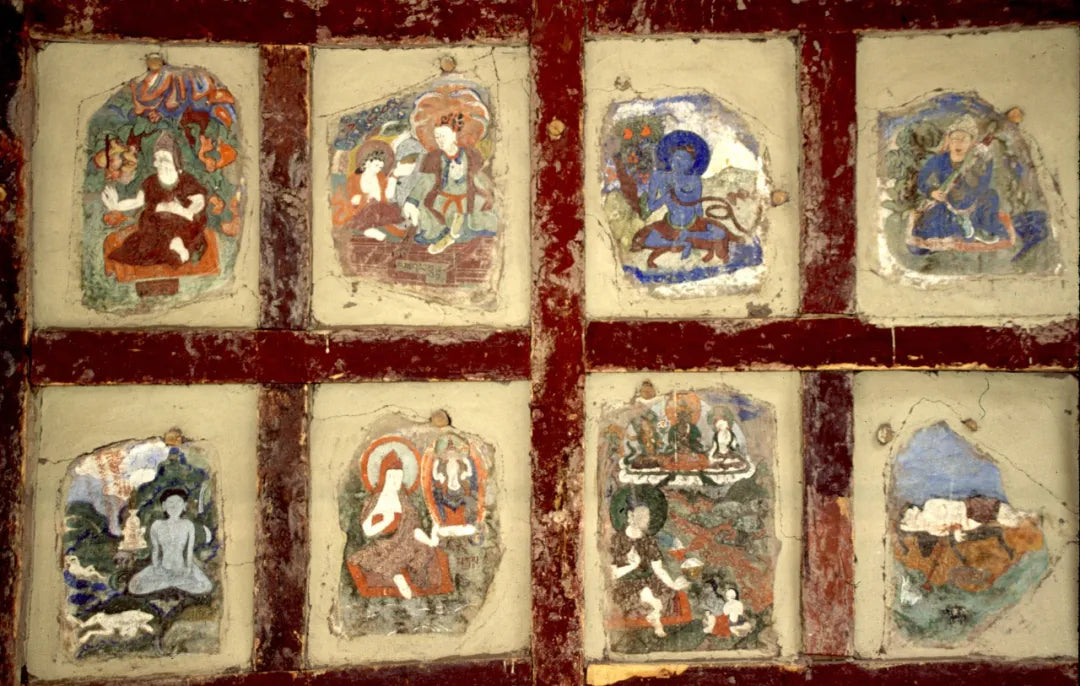
Chromatic Masterpieces of Himalayan Art: Achiever Murals in Hemis Gompa

The young monastery monk grinds pigments.

The monk prepares the pigment wash (Tibetan: chutson / ཆུ་ཚོན་) for painting.
In the classical Himalayan tradition of color theory, scholars generally divide the study of color into three components: the symbolism of colors (Tibetan: tsön jung / ཚོན་འབྱུང་), pigment materials (tsön dzé / ཚོན་རྫས་), and color techniques (tsön tsal / ཚོན་རྩལ་).
In my previous series of articles on color theory, I used the traditional "five primary colors" framework (or six, if including black) to discuss in detail the fundamental meanings and specialized application techniques of these primal hues. However, it must be noted that these articles alone are insufficient to provide a comprehensive understanding of Tibetan color theory.
To address this gap, I will dedicate two or three more articles to explore pigment materials (such as their sources and identification methods) and color techniques (including application steps and methods) in Tibetan color practice.
Today’s article on "masterpieces of color" serves as a supplement to the earlier discussions. While we have examined numerous artistic masterpieces and their intricate details in previous installments, the presentation of these works lacked continuity due to variations in artistic styles and regional traditions. To truly appreciate the unique brilliance of Tibetan color theory, it is essential to analyze a complete, contextually grounded artwork as a unified case study.

Rob Linrothe

Rob Linrothe's work
"Holy Madness: Portraits of Tantric Siddhas"
A Primer on Portraits of the Mahasiddhas

Rob Linrothe's work
Demonic Divine: Himalayan Art and beyond
A Masterpiece on the History of Visual Communication
In the description by American scholar of Asian art history Rob Linrothe (1951-), the "Eighty-Four Mahasiddhas Group" (གྲུབ་ཆེན་བརྒྱད་ཅུ་གྱ་བཞི་) forms distinct but textually compliant painting patterns (color-line-structure) within different Tibetan artistic traditions. A set of early 17th-century reconstructed murals in the Hemis Monastery (ཧེ་མི་དགོན་; also translated as "Hemis Monastery" or "Hemis Gompa") are preserved. I chose this set of paintings for several reasons: firstly, these works are still within the original setting of the monastery; secondly, they largely retain a local style that is a blend of Western Tibetan and Central Tibetan influences; and finally, these works are closely associated with the spiritual beliefs of Dakpo Tashi Namgyal (སྟག་ཚང་རས་པ་ངག་དབང་རྒྱ་མཚོ་; 1574-1651), who oversaw the reconstruction of Hemis Monastery and emphasized the traditions of the Kagyu lineage and Lotus Sutra worship.

Hemis Monastery (Hand-drawn Illustration)
This illustration was created by Orientalist scholar Thomas Edward Gordon (1832–1914).

Location Map of Hemis Monastery
Blue star marks Hemis Monastery; black star indicates Lhasa City.

Tagtsang Repa

"Hayagrīva (Horse-Headed Deity)", late 16th century, Rubin Museum of Art

Detail: Donor Figures
[Note: Many scholars believe the donor figures depicted here represent the Ladakhi royal family of Western Tibet. Tagtsang Repa prophesied that he would establish a special relationship with a ruler whose name contained "Sengge" (སེང་གེ་, lion)—a reference to King Sengge Namgyal (སེང་གེ་རྣམ་རྒྱལ་, 1570–1642) of Ladak, who later became his disciple in 1604. In Drukpa Kagyu biographical literature, their relationship is poetically described as "a yogi riding a lion" (རྣལ་འབྱོར་སེང་གེའི་མཇིང་པར་ཞོན་པ་), where "Repa" (རས་པ་) signifies the cotton-clad attire of Himalayan ascetics.]

"The First Set of Mahasiddha Paintings at Hemis Monastery"
Photographed by Rob Linrothe

"The Second Set of Mahasiddha Paintings at Hemis Monastery"
Photographed by Rob Linrothe

"The Third Set of Mahasiddha Paintings at Hemis Monastery"
Photographed by Rob Linrothe

"The Fourth Set of Mahasiddha Paintings at Hemis Monastery"
Photographed by Rob Linrothe

"The Fifth Set of Mahasiddha Paintings at Hemis Monastery"
Photographed by Rob Linrothe

"The Sixth Set of Mahasiddha Paintings at Hemis Monastery"
Photographed by Rob Linrothe
In the 1752 monastery chronicle and regulations (bca‘ yig) of Kathok Rigdzin Tsewang Norbu (ཀཿ་ཐོག་རིག་འཛིན་ཚེ་དབང་ནོར་བུ་, 1698–1755) on Hemis Monastery, there is mention of this particular set of Mahāsiddha paintings—described as "executed under the direct supervision of Tagtsang Repa himself, who even participated in their painting" and noted for their "unconventional color schemes."
Similarly, the Drukpa Kagyu master Ngawang Gyeltsen (འཇམ་མགོན་ངག་དབང་རྒྱལ་མཚན་, 1647–1732), a former royal tutor, referenced these paintings in his correspondence to Bhutan. He regarded them as "the natural emanated forms of the Mahāsiddhas" (རང་བཞིན་གྱིས་གཟུགས་བྲིས་པ་, rang zhin gyi drukpa), observing that they "employed precious pigments yet deliberately avoided emphasizing outlines." Ngawang Gyeltsen praised the works as "elegant and restrained—the handiwork of celestial painters."
 Ngawang Gyeltsen (Detail), 19th century, Rubin Museum of Art
Ngawang Gyeltsen (Detail), 19th century, Rubin Museum of Art
In this series of works, the artists carried forward the vigorous yet minimalist painting style characteristic of Western Tibet. Under the influence of Tagtsang Repa, who introduced both the Old and New Menri traditions and early Karma Gadri styles to Ladakh, the pieces exhibit strikingly bold experimentation in color and composition—so much so that Rob Linrothe once referred to the painters behind them as "the Matisses [Henri Matisse] no one has ever heard of."
The renowned Western Tibetan artist Rizong Sazhu (རི་རྫོང་སྲས་སྤྲུལ་, 1864–1927), who actively studied and copied these works, noted: "The chromatic mastery (of these murals) is nearly impossible to replicate."
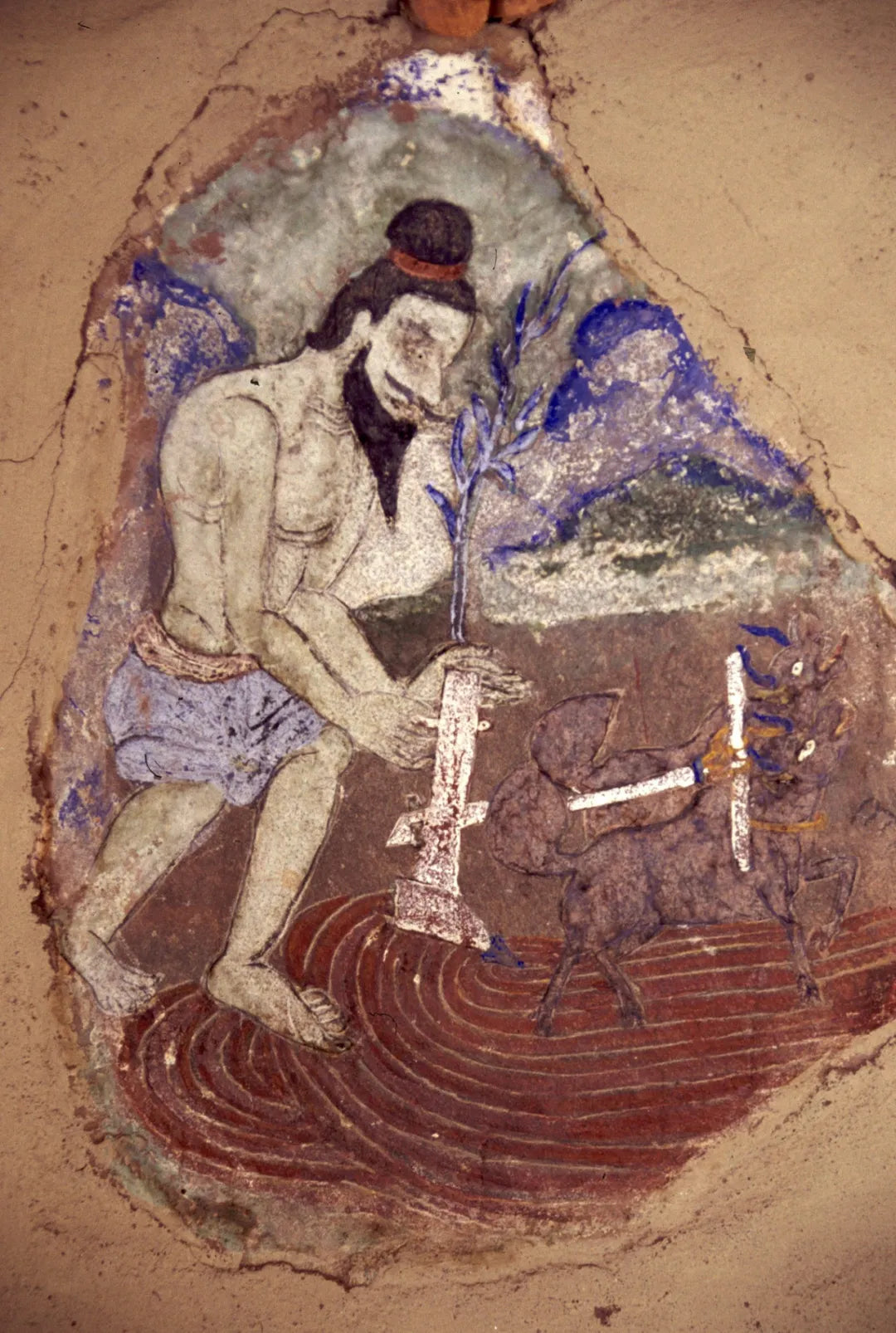
Medna
Photographed by Rob Linrothe
The Mahasiddha Medhini (མེ་དྷི་ནཱི་), a Farmer-Turned-Enlightened Master

Dzamari Pa
Photographed by Rob Linrothe
The Cobbler Siddha: Dzamari Pa (ཙཱ་མཱ་རི་པ་)
—A Leatherworker-Turned-Mahasiddha—

Dandepa
Photographed by Rob Linrothe
The Weaver Siddha: Tantipa (ཏནྟི་པ་)
—A Textile Master Turned Enlightened Yogi—
 Sarwabha Cha
Sarwabha Cha
Photographed by Rob Linrothe
The Glutton Siddha: Sarvabhaksha (སརྦ་བྷཀྵ་)
—From Voracious Eater to Enlightened Master—

Mona Bay
Photographed by Rob Linrothe
The Fisherman Siddha: Minapa (མཱི་ན་པ་)
—From Net-Caster to Nirvana—

Dombi Pa (ཌོམྦི་པ་)
Photographed by Rob Linrothe
The Royal Siddha: Dombipa (ཌོམྦི་པ་)
—From Palace to Liberation—

Bandhepa (བྷནྡེ་པ་)
Photographed by Rob Linrothe
The Artist Siddha: Bandhepa (བྷནྡེ་པ་)
—From Brushstrokes to Enlightenment—

Kankari Pa
Photographed by Rob Linrothe
The Widower Siddha: Kankari Pa (ཀངྐཱ་རི་པ་)
—From Grief to Liberation—
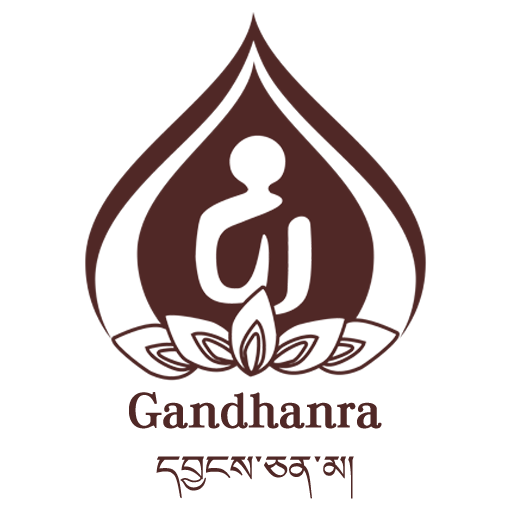

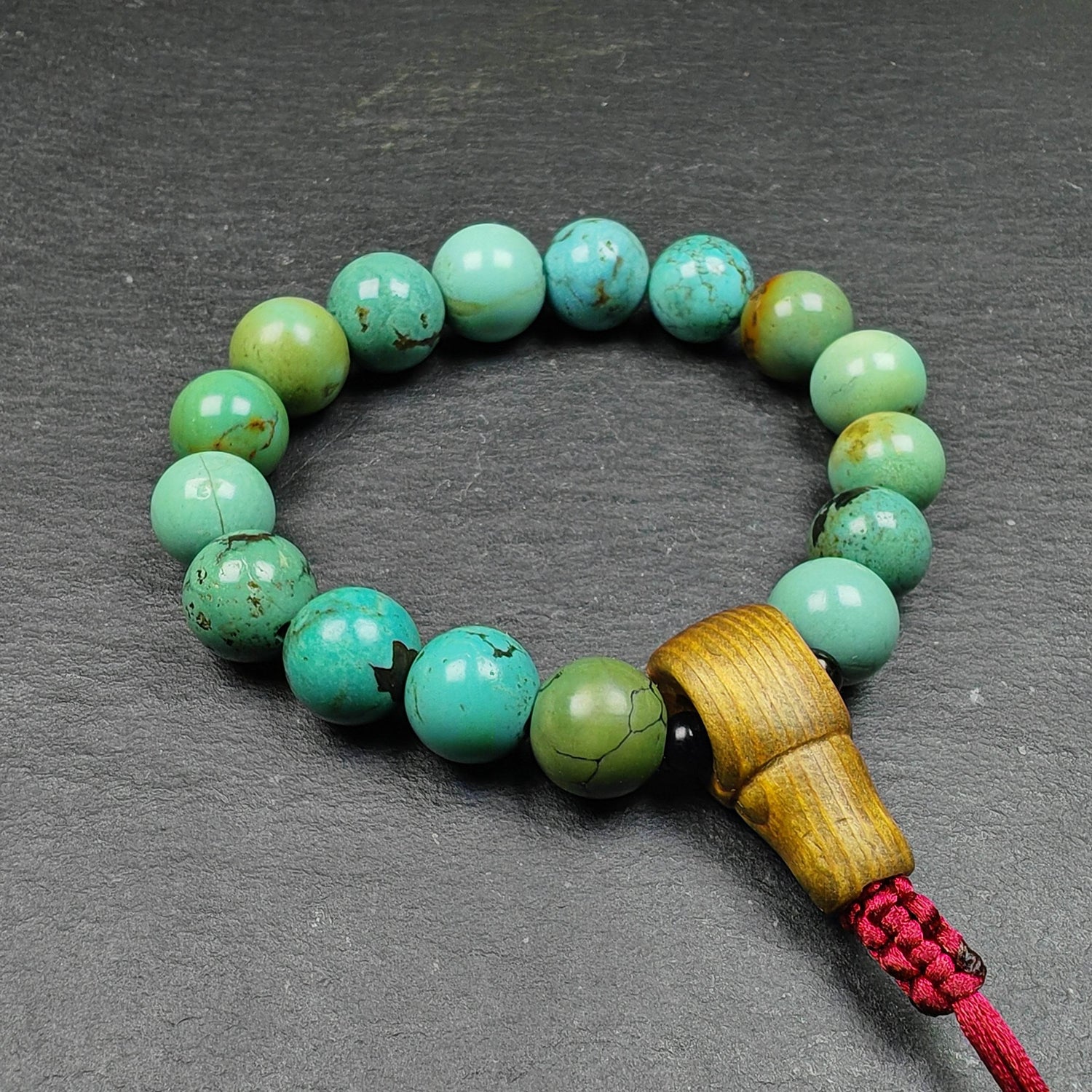
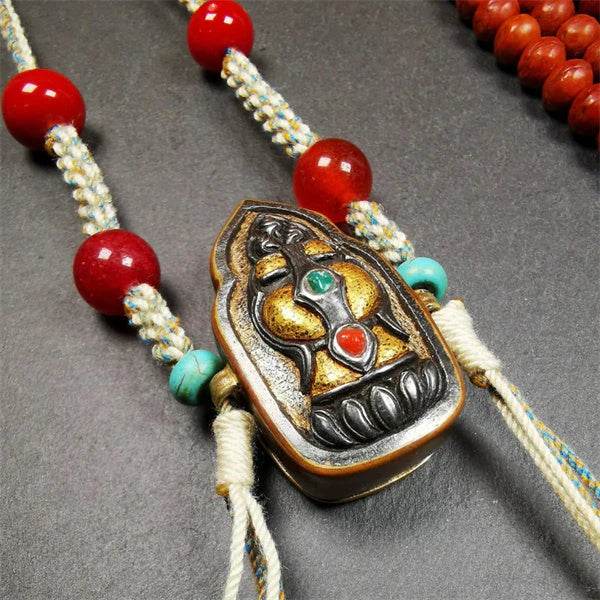
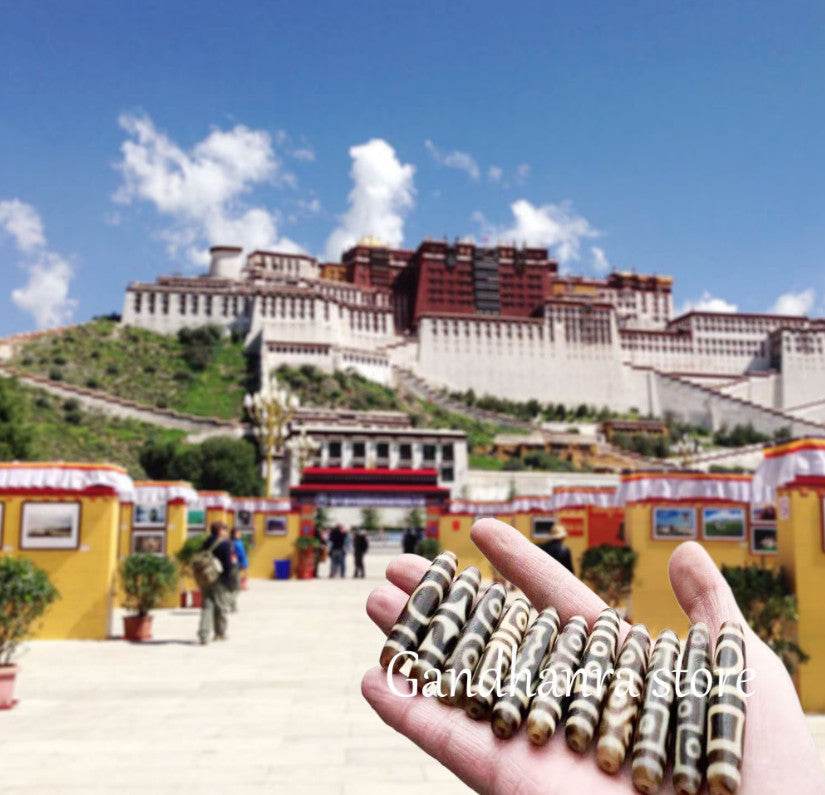
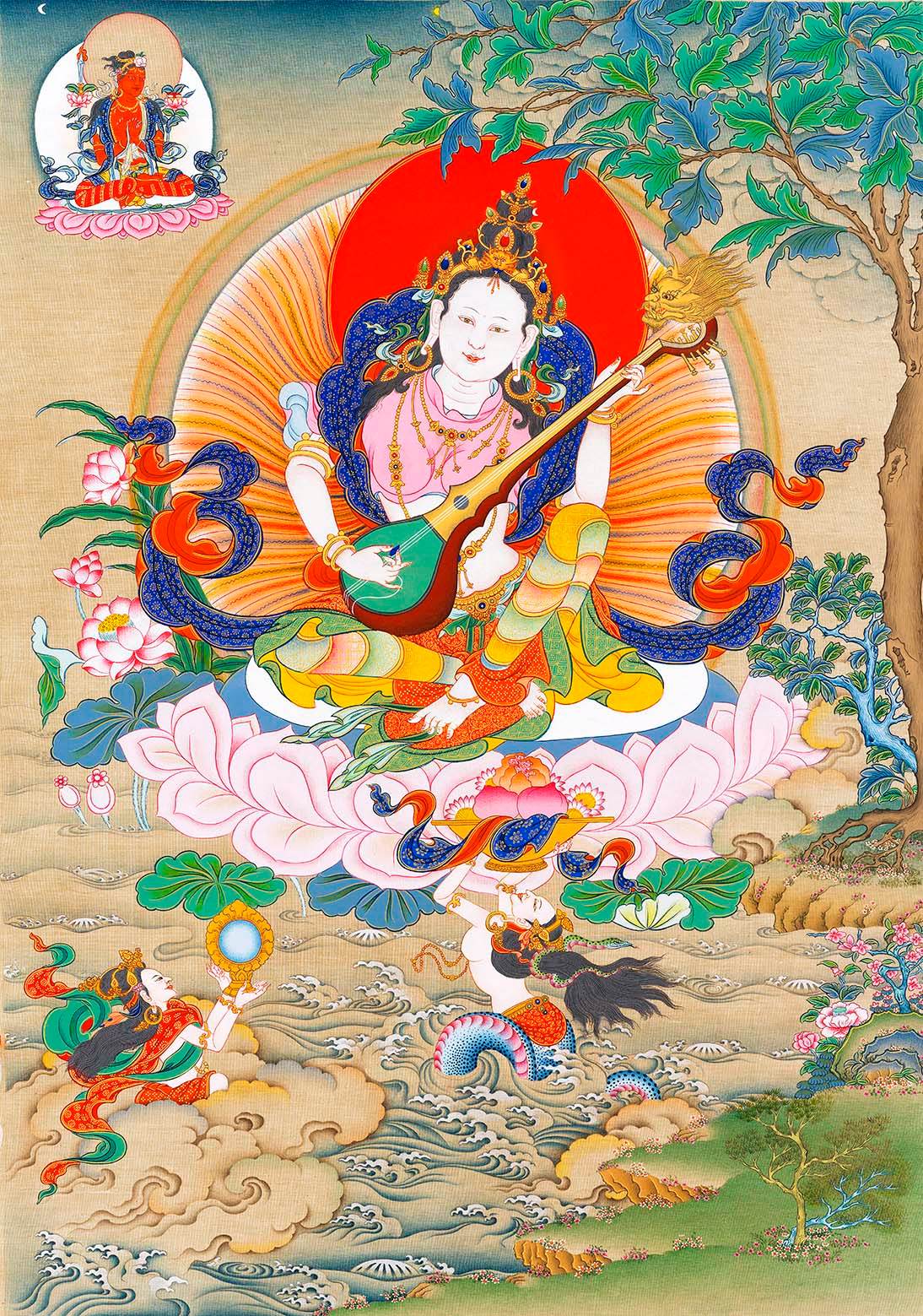

1 Kommentar
JCbtg DEaIehw UkNKX vZv